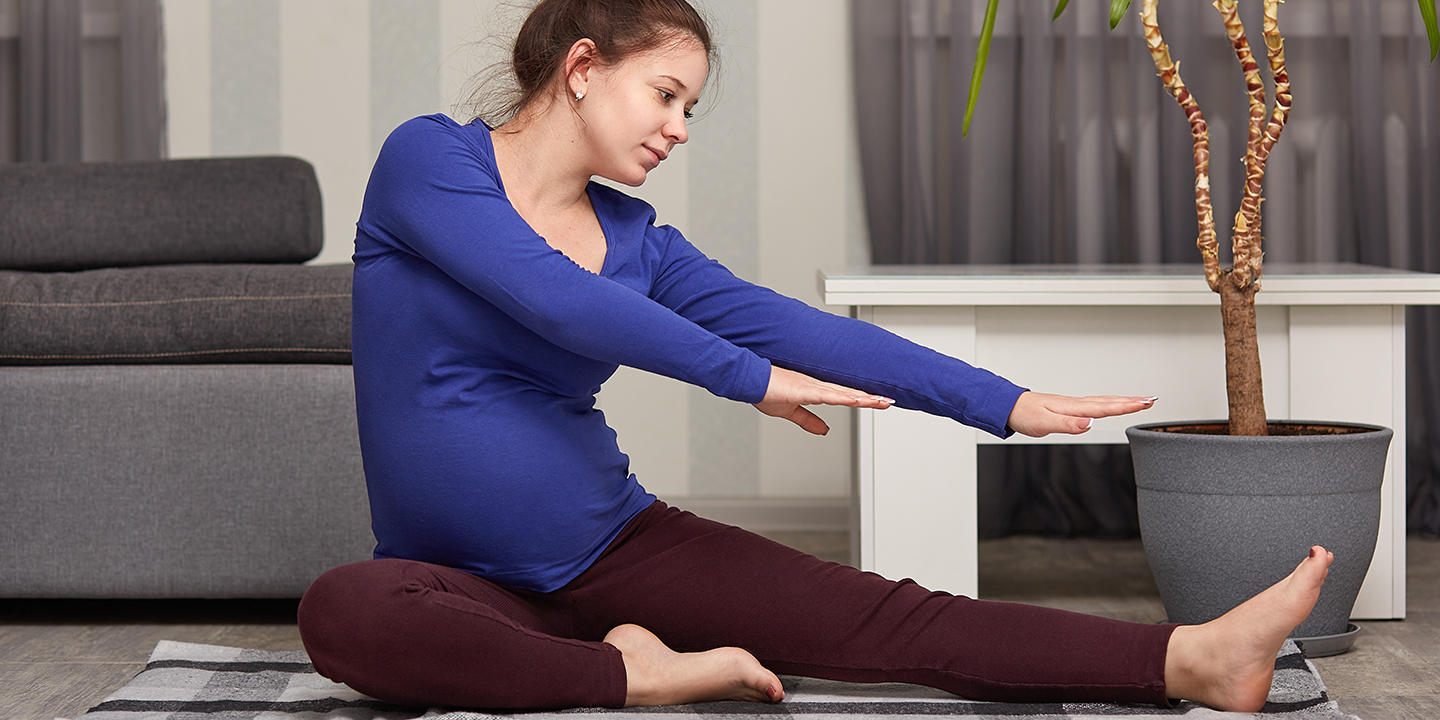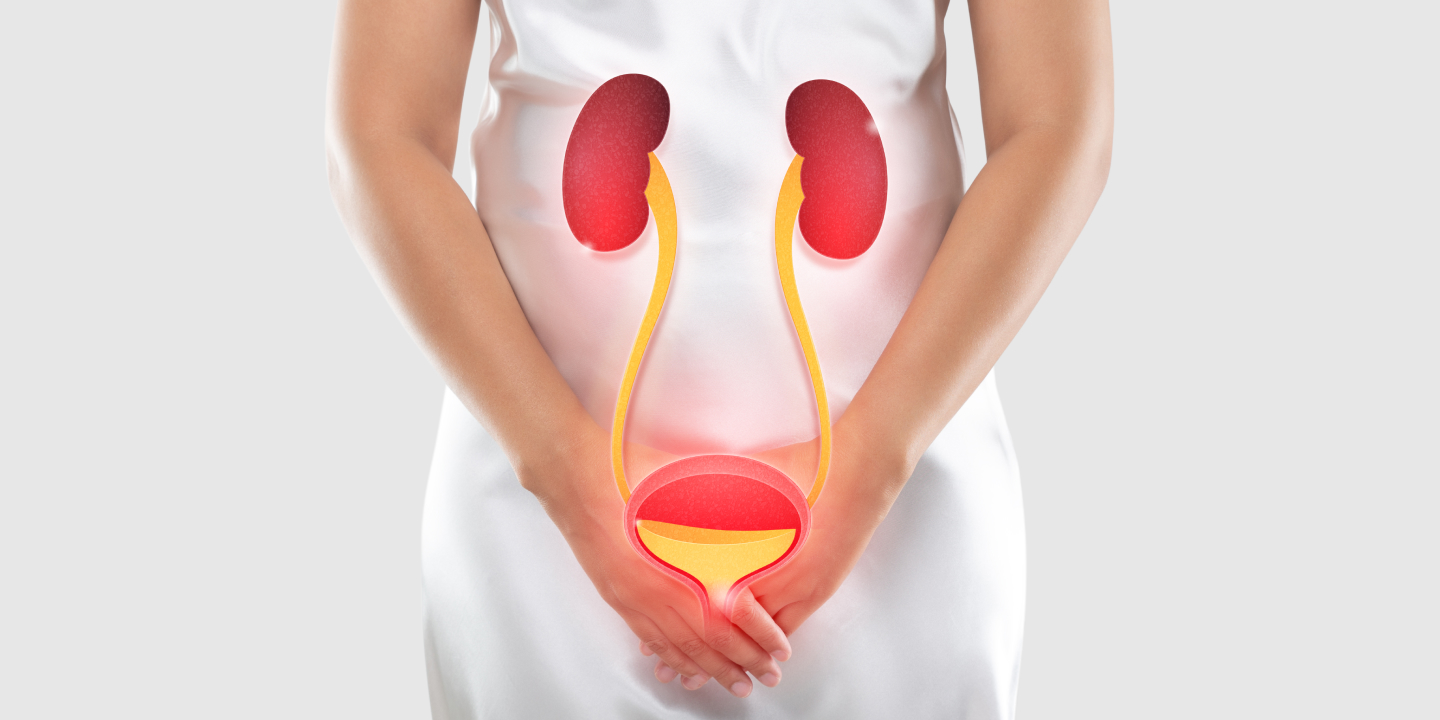
About one-third of adult women experience some or the other form of pelvic floor dysfunction. Pelvic floor muscles give support to the uterus, bowel, as well as bladder, prevent bladder and bowel prolapse incontinence, and are vital in sexual function. These muscles can be weakened by childbirth, pregnancy, obesity, prostate cancer treatment, and stringing of chronic constipation. These changes in pelvic floor muscles owing to the above reasons can lead to many issues, and thus, if you have any problem related to bowel, bladder, or sexual function, then it is vital for you to get yourself checked and treated by an expert. Schedule your appointment with QUEEN’S GYNECOLOGY which believes in the timely intervention of pelvic and uterus-related issues.
In this Article
- 1 Pelvic floor dysfunction – An overview
- 2 Symptoms of pelvic floor dysfunction
- 3 Is pelvic pain different in males and females?
- 4 Causes of pelvic floor dysfunction
- 5 Diagnosing of pelvic floor disorders
- 6 Exercises for pelvic floor dysfunction – How do they work?
- 7 How can QUEEN’S GYNECOLOGY help you treat pelvic pain or other pelvic-related abnormalities?
- 8 Conclusion
- 9 FAQ’s
Pelvic floor dysfunction – An overview
Pelvic floor dysfunction is because of the muscle, tissues, and ligaments that support the rectum and bladder, causing leakage of urine or stool; a person may also have trouble urinating. The pelvic floor is a term collectively used for muscles, ligaments, and tissues that are around the pelvic bone. This pelvic floor supports the organs in the pelvic comprising organs, the rectum, uterus, urethra, and vagina. People experiencing pelvic floor dysfunction have tight or weak pelvic floor muscles. People with tight muscles may have trouble urinating or passing stool, and if they have weakened muscles, the organs within the pelvis may press down or drop on the rectum and the bladder. Women may also feel pain during sex, and men may have problems keeping an erection.
Symptoms of pelvic floor dysfunction
Pelvic floor problems can develop when the pelvic floor muscles are weakened, stretched, or tight. Many have weak pelvic floors from an early age and notice the problem after certain life stages like pregnancy, menopause, etc. There are many types of pelvic floor dysfunction, and the symptoms vary and depend upon the types. Women with pelvic floor dysfunction symptoms may:
- Feel fullness, heaviness, or aching in the vagina, which worsens over time.
- Feel a bulge or see something coming out from the vagina.
- Have a problem emptying the bladder completely.
- Feel a frequent need to urinate
- Leak stool or difficulty in controlling gas.
- Suffering from constipation
- Painful urination
- Pain in lower back without any cause
Some women with pelvic floor issues do not experience any symptoms in starting. Also, they think that problems with the bladder are normal. However, bladder-related issues are treatable; these treatments help women with pelvic floor issues.
Related Blog: Pelvic Pain During Pregnancy: Causes And Treatments
Is pelvic pain different in males and females?
Weak pelvic floor symptoms in females interfere with their reproductive health and affect the uterus and vagina. Women with the probe may also suffer other symptoms, like pelvic floor pain during sex. Men have different conditions as pelvic floor dysfunction exists, with many other associated conditions like male urinary dysfunction, erectile dysfunction, and prostatitis.
Causes of pelvic floor dysfunction
Pelvic floor dysfunction contracts your muscles and does not let them relax, leading to many issues as you may experience difficulty having a bowel movement. You should not ignore the condition because if left untreated, pelvic floor dysfunction can give discomfort and also have long-term colon damage or else severe infection. However, the causes of pelvic floor dysfunction are not clear, but some specific conditions are considered as the risk factor for the occurrence :
- Childbirth – pregnancy and childbirth are linked with pelvic floor problems. However, the connection is not clear as per the study. First, mothers of vaginal delivery are linked to a risk of pelvic floor disorders. Also, the risk increases if forceps are used for delivery.
- Pressure on pelvic flour – Some factors like being overweight, obesity, chronic straining to have bowel movements, chronic coughing because of smoking, or health factors put a person at the greatest risk of PFDs.
- Getting older: Age affects pelvic floor muscle that can weaken as a woman ages or else during menopause.
- Weaker tissues – genetics plays a vital role in the strength of women’s muscles, tissues, bones, etc., and they are more prone to have pelvic organ prolapse as well.
- Surgery: Any type of surgery, like a previous hysterectomy or surgery to correct prolapse, is linked with higher risks of PFDs.
- Injury: An injury to the pelvis can also make a person more prone to PFDs.
The most common cause of pelvic floor disorder is pregnancy, being overweight, and aging. However, you are pregnant and have delivered a baby vaginally. In that case, you can still get a pelvic floor-related problem because pregnancy changes your pelvic area irrespective of the type of delivery you have done.
Diagnosing of pelvic floor disorders
Pelvic floor diagnosis starts with a full medical history, including symptoms, medical issues, and any history of emotional trauma a. Your doctor will use external as well as internal methods to evaluate the pelvic floor dysfunction in muscles and to determine your body’s ability to contract and relax them. The expert will seek for signs of weak pelvic floor symptoms, muscle knots, and misalignment. The expert will use externally placed electrodes to know if a person can effectively contract and relax your pelvic floor muscles. The doctor will carefully ask about your symptoms and will determine whether you have a
- History of urinary tract infections
- If you are female and delivered a baby
- If you are female and have pain while doing sex
- If you have interstitial cystitis
- Is there any straining to pass a bowel movement
He may also recommend many other tests, including
- Surface electrodes for testing of pelvic muscle control
- Manometry to test pressure, the strength of muscles, and coordination
- A defecating proctogram is done
- A uroflow test to determine how well you empty your bladder
- Treatment of Pelvic Floor dysfunction
The main aim of pelvic floor dysfunction treatment is to relax the muscles to make bowel movements easy and offer them full control. Treatments can help when pelvic floor dysfunction symptoms restrict normal activities in women.
There are many ways in which your gynecologist will help you to treat the PFDs:
- Nonsurgical treatments
There are many non-surgical treatments commonly used to treat the condition, including
- Bladder training: It involves using the bathroom on a set schedule to ergin bladder control and also applies techniques to overcome the unwanted urge to urinate.
- Pelvic floor muscle training: Also known as PFMT or Kegel exercises, it involves relaxing and squeezing the pelvic floor muscles. It is performed correctly and routinely and is considered the best way to improve the symptoms of urinary incontinence and prolapse. Your gynecologist will advise you to follow and do pelvic floor exercises step by step to get benefits. Women can do exercises on their own or can also take the help of a pelvic floor therapist. During pelvic floor therapy, using biofeedback will help to teach women which muscle group to squeeze.
- Medicine: Medications will be prescribed by your gynecologist to treat certain bladder control issues or to prevent loose stools or more bowel movements.
- Surgical management: Laparoscopy, as well as hysteroscopy, are best for correcting any pelvic-related problem if required. Doctors can use Laparoscopy to diagnose and treat conditions that affect the pelvic area, ovaries, and several organs in the pelvic area. Experts do hysteroscopy to view the inner cavity of the uterus, determine the abnormalities or issues and perform certain corrective procedures to treat it well. QUEEN’S GYNECOLOGY, one of the best clinics in Delhi, uses Laparoscopy and hysteroscopy to diagnose and treat many gynecological disorders, including infertility. Both procedures are minimally invasive, with fewer complications and less recovery time.
- Lifestyle changes – Your gynecologist will also recommend some lifestyle changes that can help women to reduce or ease the symptoms of a weak pelvic floor. You must be advised to limit foods and drinks that stimulate the body, like caffeinated beverages, citrus fruits, alcoholic beverages, etc. They recommend a fiber-rich diet for certain bowel movements and advise you to lose weight as it will relieve pressure on pelvic organs.
Exercises for pelvic floor dysfunction – How do they work?
Pelvic floor exercises are helpful and strengthen the muscles around your bladder, bottom, vagina, and penis. Your doctor will suggest you properly do the exercise as it helps in urinary incontinence, treat pelvic organ prolapse, and also make sex better in many ways. There are pelvic floor exercises for both men and women, including Kegel exercises, happy baby pose, diaphragmatic breathing, and lungs and squats, as they will benefit both men and women the most. All these exercises help to relax and also condition the pelvic floor muscles. Also, the doctor suggests you carry out physical therapy or pelvic floor PT if you experience urinary dysfunction, painful sex, or pain in the pelvic area. Pelvic floor physical therapy includes exercises, manual techniques, and movement coordination; incorporating all of these can be very helpful to you.
QUEEN’S GYNECOLOGY, one of the reputed clinics in Delhi, offers treatments for various conditions and solutions to keep women healthy. The clinic is well known for its customized treatment protocols that make the best out of all. It is the right platform where females can address their gynecological; and sexual well-being in a comfortable manner. , Here you will get treated by an experienced gynecologist if you have any symptoms of pelvic pain, delayed periods, premature delivery, or infertility, which are common complications of uterine or pelvic abnormalities.
Conclusion
Pelvic floor health is often ignored by women until they get pregnant or face any issues; the pelvic floor is vital and should be taken care of. i.e., gets weak with age and because of many other lifestyle factors. Weak pelvic floor symptoms should be noticed at the time they start, like incontinence, pelvic organ prolapse, and sexual dysfunction. The time pelvic floor dysfunction invades your life and affects your health, don’t wait to seek professional help. Schedule your appointment with an expert gynecologist to get yourself checked on time and get treated. QUEEN’S GYNECOLOGY is the right place for you; that offers care and treatment for pelvic floor dysfunction, including the latest treatments and strategies to help you regain control.
FAQ’s
How well you respond to PT treatment for a pelvic floor disorder depends upon the issue that you experience. However, your therapist will create a personalized plan or Pelvic floor PT to treat your condition more effectively.
Yes, it can be prevented, or a person can decrease the risk of the condition by controlling weight and making lifestyle changes. Doing Kegel exercises correctly and timely can also help you to prevent PFDs.
PFDs have become a common issue nowadays especially as you age and further significantly impact a person’s quality of life. Effective and on-time treatment can reverse the disorders.
It is the common type of pelvic floor disorder in which prolapse occurs when pelvic floor muscles, along with other connecting tissues, become weak, which causes the pelvic to fall out of place. It can be treated with many nonsurgical treatments.
The doctor does an internal examination to know how well pelvic muscles are working and determines the cause of dysfunction. It is an important part of the diagnosis of pelvic floor disorder.






























































































































































































